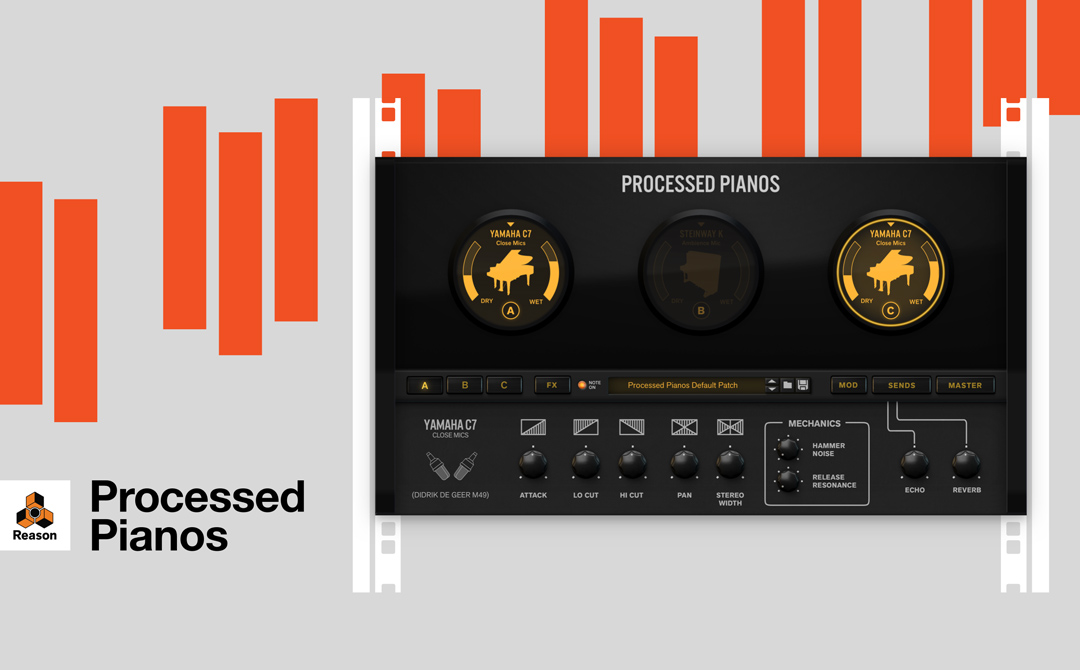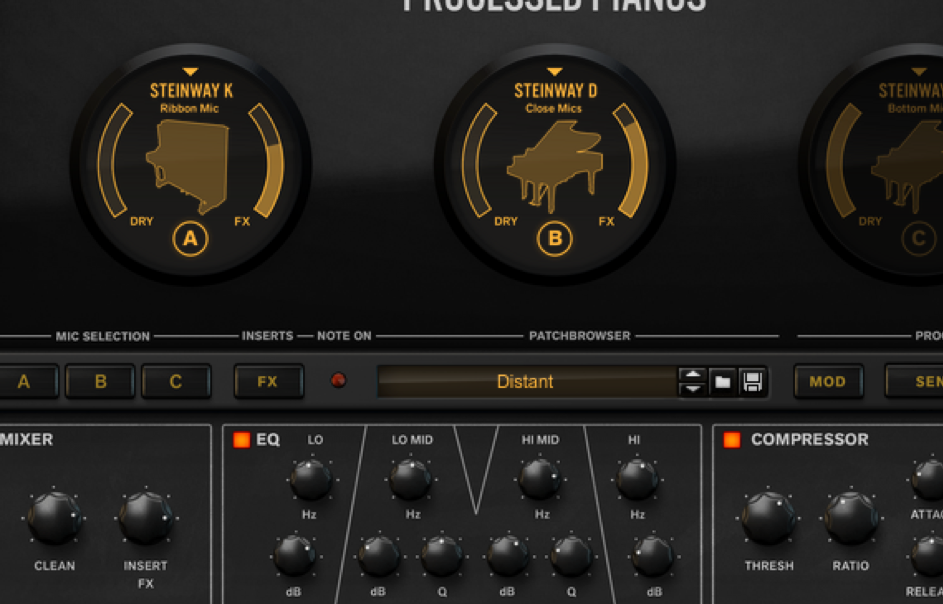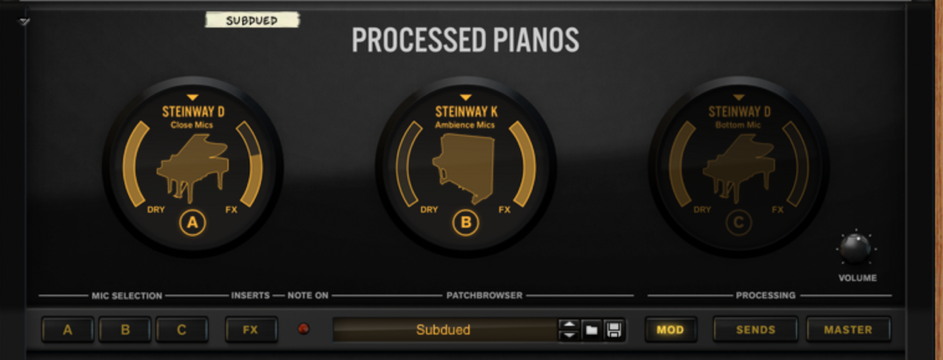
The world of contemporary sound-design and film-scoring is benefitting from a slew of high-quality tunes that take classic acoustic instruments and turn them inside out. With Processed Pianos we wanted to make the workflow that creates the palette quick, intuitive and inspirational.
This is why we went a few extra steps when we started working on the Rack Extension version of Reason Pianos. Optimizing everything that made the original refill great, we’ve added tons of new flexibility in terms of mic balances, FX blends and an easy to use mod-matrix that creates all the processed pianos you will ever need. In the end it turned out to be a completely new instrument. The same great sample set as the original, but with far more creative control and sound design features. To help you get started on your creative journey I’ve gone into detail on three presets and their respective musical scenarios where Processed Pianos really comes into its own. As a tip I’d highly recommend combining this with the Poly-Step Sequencer for a totally creative and generative way of writing chords, melodies and experimental arpeggios.Acoustic Pianos Textures
What’s great about processed piano textures is that it allows you to create a melodic bed for the rest of your instrumentation to sit on top of. Smoothed out transients and long-lasting reverbs tail can help fill out the texture on which a sparse trap beat sits or help create a sense of melancholy in a deep-house arrangement. A patch like “Distant” makes heavy use of the shimmer reverb effect balanced with the multi-tap echo to create long lasting piano-esque textures. There’s a good balance between original piano dry-levels and blend of the FX section that’s been mapped to modulation parameters. To take it yet further down the path of texture rather than instrument, turn up the attack parameter on piano mics A & B and increase the length of the reverb time.
M1 Style Piano Stabs
A staple of late 90s electronica and classic rave music is the processed piano stab, something that Processed Pianos does exceptionally well. The mod-matrix really comes into its own here with a tight LFO rate ie. ½ or ¼ speed making for choppy rhythmic filtering or delay sends.
A patch like “Dreamzone” for example combines a tempo-synced filter cut-off movement with a heft dose of bit-crush. You can hear there’s piano in there but it’s also got the rebellious character of early electronic music like happy-hardcore and breakbeat.
Contemporary Songwriting Piano
Cream of the crop R’n’B artists like James Blake and Solange often feature subtly processed piano sounds in their music. We can make clever used of the Processed Piano instrumentation and effects to get the same results. With subtle tweaks to compression, EQ and tasteful reverb/delay the much-loved songwriting piano becomes additionally dramatic. This works particularly well in Processed Pianos where mic-combinations from three-unique pianos can be combined in any which way to highlight the register of a particular chord progression.
A piano patch liked “Subdued” balances a slightly filtered piano sound with a rhythmic delay. Traditionally ballad style chord sequences can easily be related to and sung on top of, but the added processing gives that progression an extra bit of movement and depth.

60% off Voucher Code: RPPSAVE
Note: Make sure you click “Apply code” before making your purchase. Offer ends August 31st 2019.



